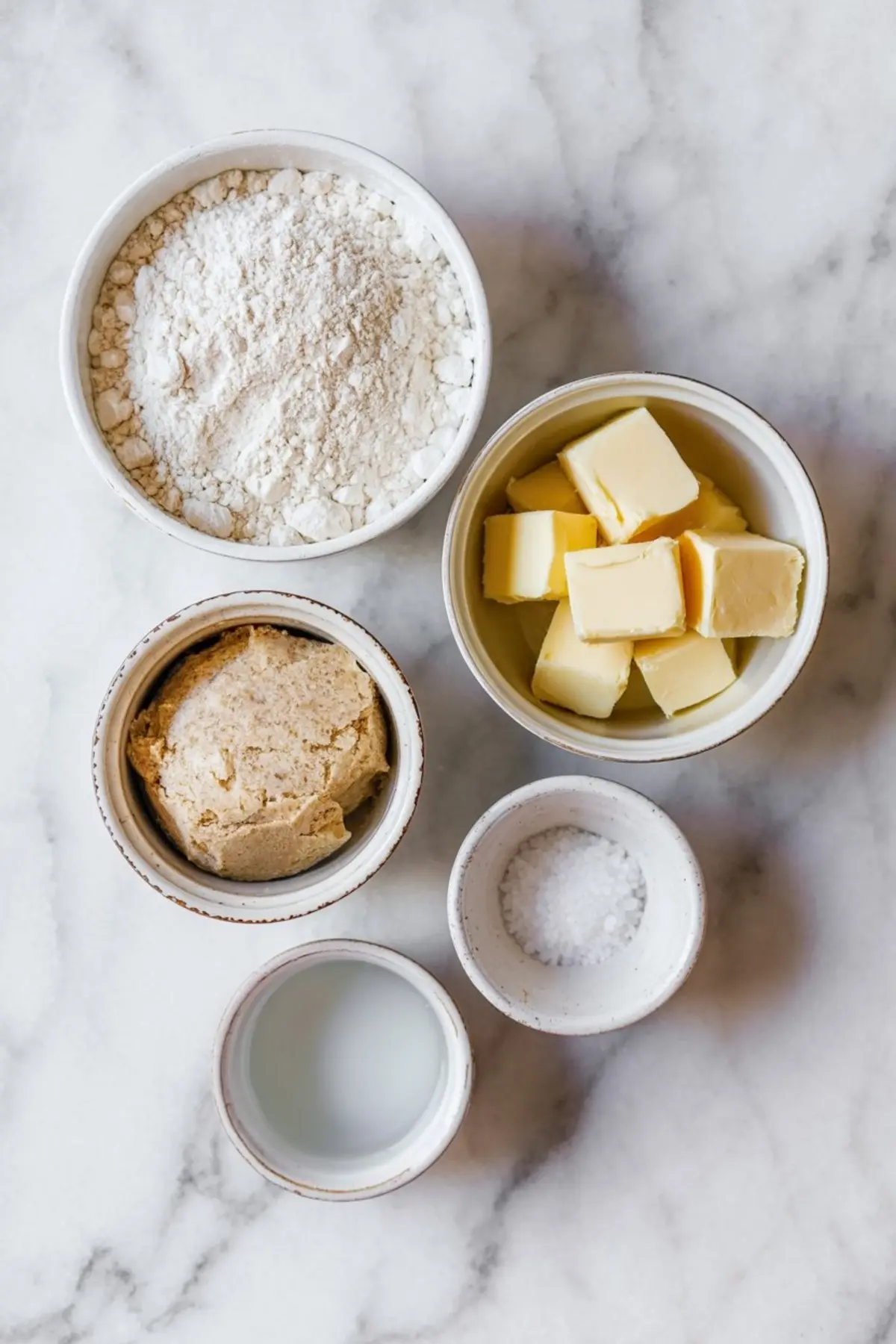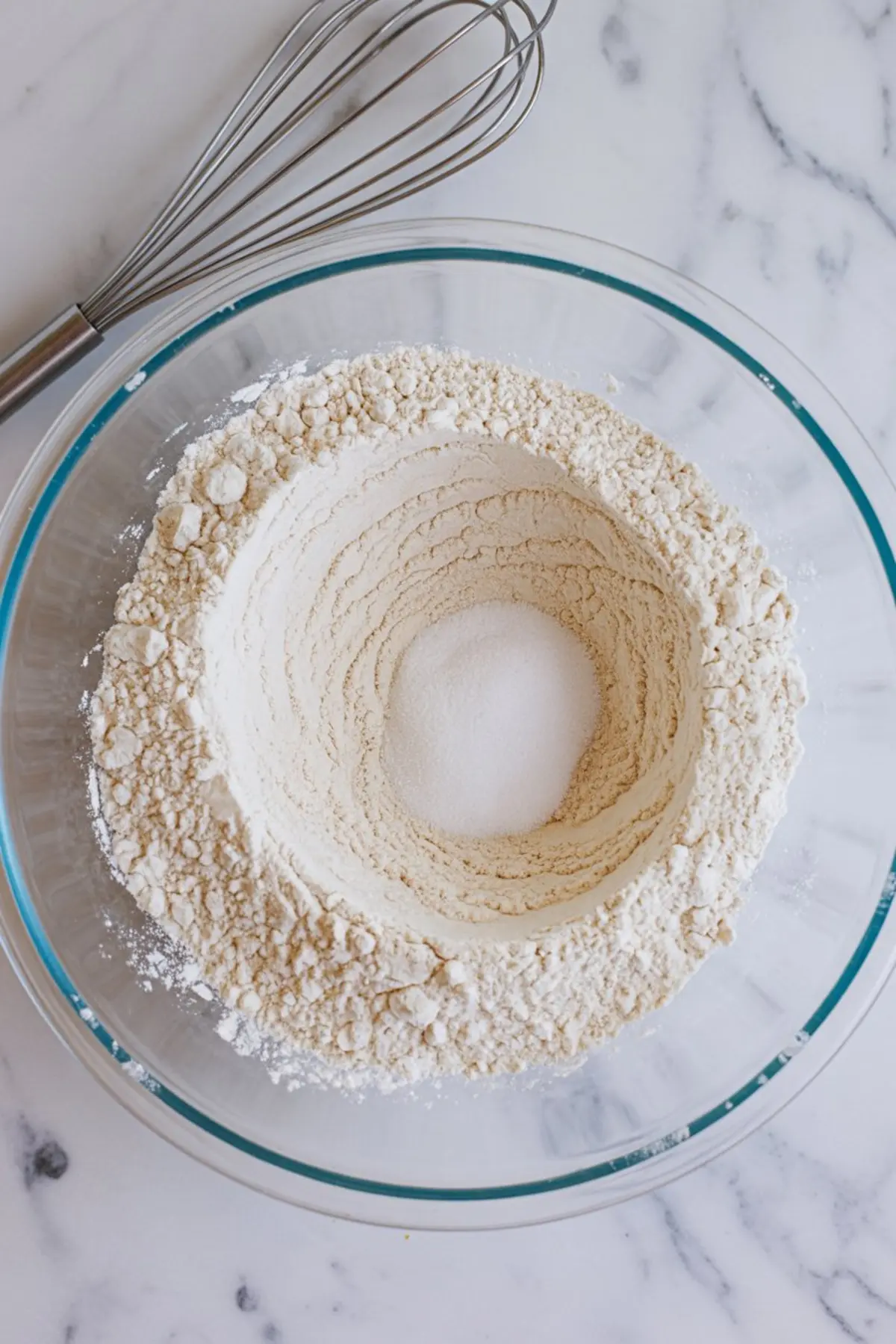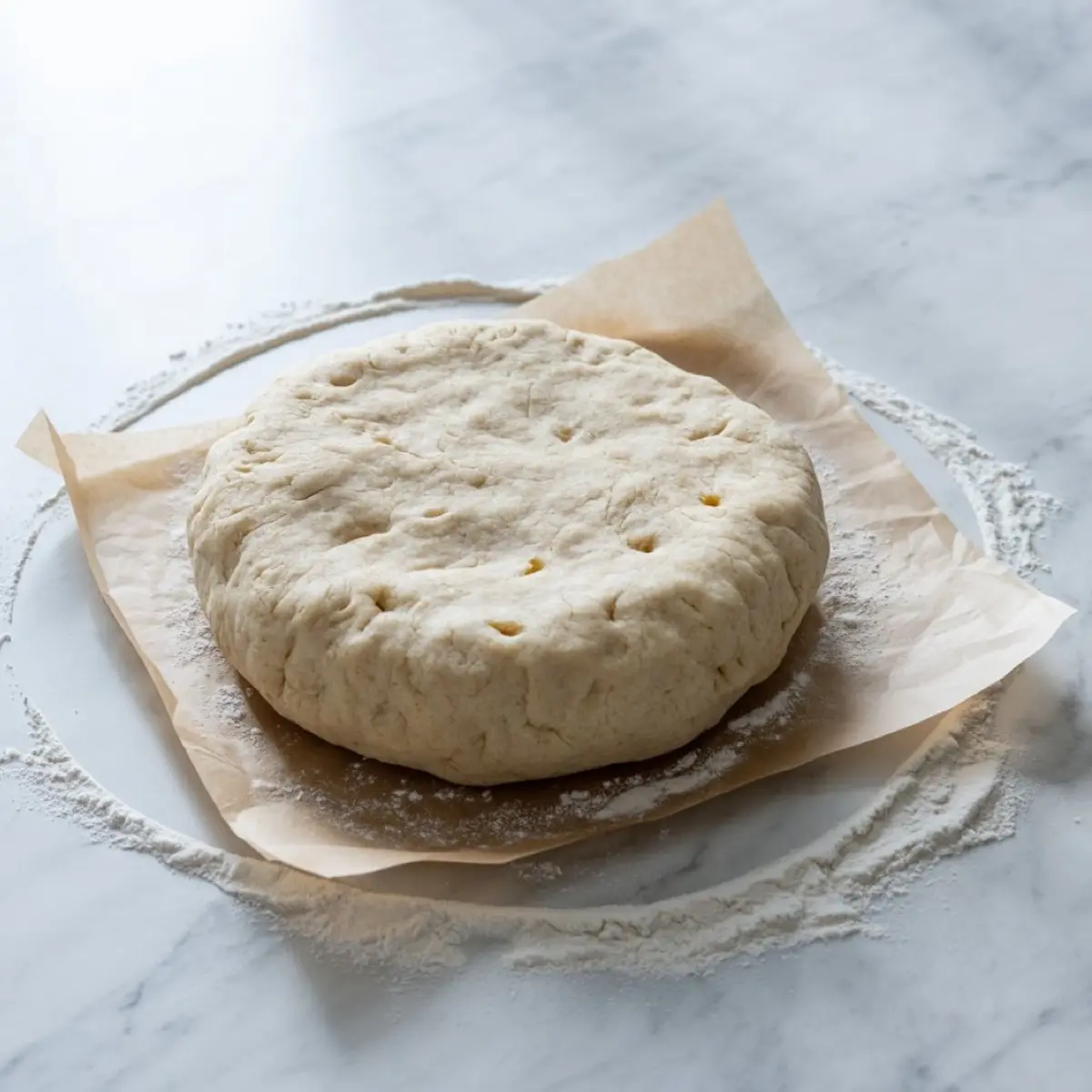A pie crust sets the stage for everything that follows. The filling might get the applause, but the crust decides if the show is worth watching. This sourdough pie crust recipe blends the flakiness of a traditional butter crust with the slight tang of sourdough discard. You get a structure that holds up to heavy fillings and a tenderness that works beautifully with softer ones.
You’ll learn how to mix, rest, and roll this dough so it behaves for you. I’ll walk you through why the sourdough discard makes a difference, what to expect in the dough’s texture, and how to decide on small adjustments for sweet or savoury pies. If you’ve worked with regular pie dough before, you’ll notice the process feels familiar but delivers more depth in flavour.
A good pie crust should feel predictable in your hands. This one does — and once you’ve made it, you’ll probably keep it in your rotation alongside your homemade pie crust recipe.

Ingredients That Build Structure and Flavour
The base starts with all-purpose flour for balanced structure. It’s strong enough to hold its shape, but it doesn’t toughen the crust the way bread flour would. Cold, cubed butter is non-negotiable. The sharp temperature contrast helps create steam pockets during baking, giving you those sought-after flaky layers.

Sourdough discard brings in moisture and a gentle tang without overpowering the pie’s filling. I’ve found the flavour works equally well in a spiced pumpkin pie and a savoury chicken pot pie. Fine sea salt seasons the dough from within, while sugar or dried herbs give it a clear direction — sweet or savoury — right from the start.
A Practical Comparison: Butter vs Shortening in Sourdough Crust
I’ve tested this with both all-butter and a half-butter, half-shortening blend. The butter version wins for flavour and a flaky bite that’s worth the extra attention to chilling.
Shortening gives you slightly more tenderness and can handle warmer kitchens without softening too quickly. In my own notes, I’ve marked butter as the choice for fruit pies like apple pie and shortening for custard-heavy pies where you want a softer edge.
Bringing the Dough Together

Start by whisking the dry ingredients together in a large mixing bowl. If you’re adding sugar or dried herbs, they go in now so they disperse evenly. Cold butter is worked in next, either with a pastry cutter or your fingertips.
You want a mix of fine crumbs and some pea-sized butter pieces still visible.
The sourdough discard goes in next. Mix until the dough starts coming together. If it feels too dry or crumbly, a tablespoon of cold water at a time will bring it into balance. The dough should hold together when pressed, but it shouldn’t feel sticky. This stage decides how easy your rolling will be later.
Why Chilling Matters for Texture

Shaping the dough into a flat disk before chilling speeds up the cooling process and makes rolling simpler. Wrap it tightly, and let it rest in the fridge for at least thirty minutes. This rest relaxes the gluten so the dough won’t fight back when you roll it out. It also firms the butter again, which is essential for creating layers in the oven.
If you’ve got time, a longer chill of up to 24 hours will deepen the flavour slightly. I’ve used this dough for a sourdough apple pie after an overnight rest, and the structure held beautifully against a juicy filling.
Rolling and Shaping the Pie Crust
A lightly floured surface is key. Too much flour will dry the dough, but too little will have it sticking. Roll from the centre outwards, rotating the dough every few strokes to keep it even. For a standard 9-inch pie dish, aim for a 12-inch circle.
Transfer the dough carefully to your dish. Press it gently into the base and sides without stretching — stretching is the quickest way to get shrinkage during baking. Trim the excess and crimp the edges as you like. This dough holds decorative crimps well, which makes it a strong choice for pie crust ideas that need a defined edge.
Baking Options: Blind or Filled
If you’re blind baking, prick the base with a fork, line with parchment, and fill with pie weights. Bake at 375°F (190°C) until lightly golden, about 15–20 minutes. For filled pies, follow the baking time and temperature in your specific recipe.
This crust works equally well for single-crust pies like quiche or custard, or double-crust pies like a classic sweet pie. For double crusts, double the dough recipe and chill in two separate disks.
Serving and Storing Sourdough Pie Crust
Once baked, the crust can hold fillings without softening for several hours. If you’re making a fruit pie ahead, let it cool fully before covering loosely with foil. It keeps at room temperature for a day, or in the fridge for up to three days.
For unbaked dough, wrap well and freeze for up to two months. Thaw overnight in the fridge before rolling. I often keep a disk ready for quick sourdough discard recipes — it’s a time saver when the craving for pie strikes unexpectedly.
Save and Share This Recipe

If you try this sourdough pie crust, pin it to your boards so you can find it again. I’d love to hear how it works for you — share in the comments if you’ve tried it for sweet or savoury pies, or if you’ve made adjustments that you think others should try. Your notes often inspire the next version I test in my kitchen.
Sourdough Pie Crust Recipe

This sourdough pie crust combines the flakiness of a traditional butter crust with the slight tang of sourdough discard. It’s sturdy enough for savory pies and tender enough for fruit fillings. The cold butter creates layers, and the discard adds moisture and flavor without overpowering. Use this crust for any single-crust pie, or double the recipe for a top crust.
Ingredients
- 1 1/4 cups (150g) all-purpose flour
- 1/2 cup (113g) unsalted butter, cold and cubed
- 1/2 cup (120g) sourdough discard, cold
- 1/2 tsp fine sea salt
- 1–2 tbsp cold water, as needed
- Optional: 1 tsp sugar for sweet pies or 1/2 tsp dried herbs for savory pies
Instructions
- MIX THE DRY INGREDIENTS: In a large mixing bowl, whisk together the all-purpose flour and fine sea salt. Stir in the sugar or herbs if using.
- WORK IN THE BUTTER: Add the cold, cubed unsalted butter to the bowl. Use a pastry cutter or your fingertips to cut the butter into the flour until the mixture resembles coarse crumbs with some pea-sized pieces of butter remaining.
- ADD THE SOURDOUGH DISCARD: Stir in the cold sourdough discard using a fork or spatula. Mix until the dough begins to come together. If it remains too crumbly, add cold water one tablespoon at a time until the dough holds together when pressed.
- CHILL THE DOUGH: Shape the dough into a flat disk, wrap it tightly in plastic wrap or beeswax wrap, and refrigerate for at least 30 minutes or up to 24 hours. Chilling helps relax the gluten and firm the butter for better texture.
- ROLL AND SHAPE: On a lightly floured surface, roll out the dough into a 12-inch circle. Transfer it to a 9-inch pie dish, gently pressing it into the bottom and sides. Trim excess dough and crimp the edges as desired.
- BAKE OR FILL: For blind baking, prick the base with a fork, line with parchment paper, and fill with pie weights. Bake at 375°F (190°C) for 15–20 minutes or until lightly golden. Otherwise, fill and bake according to your pie recipe instructions.
Notes
For a double crust pie, double the recipe and divide the dough in half before chilling. Let dough rest at room temperature for 5–10 minutes before rolling if it’s too firm from the fridge.
Nutrition Information
Yield
1Serving Size
1Amount Per Serving Calories 1234Total Fat 35gSaturated Fat 13gTrans Fat 0gUnsaturated Fat 19gCholesterol 15mgSodium 1722mgCarbohydrates 210gFiber 9gSugar 44gProtein 21g

